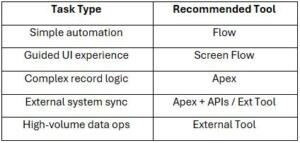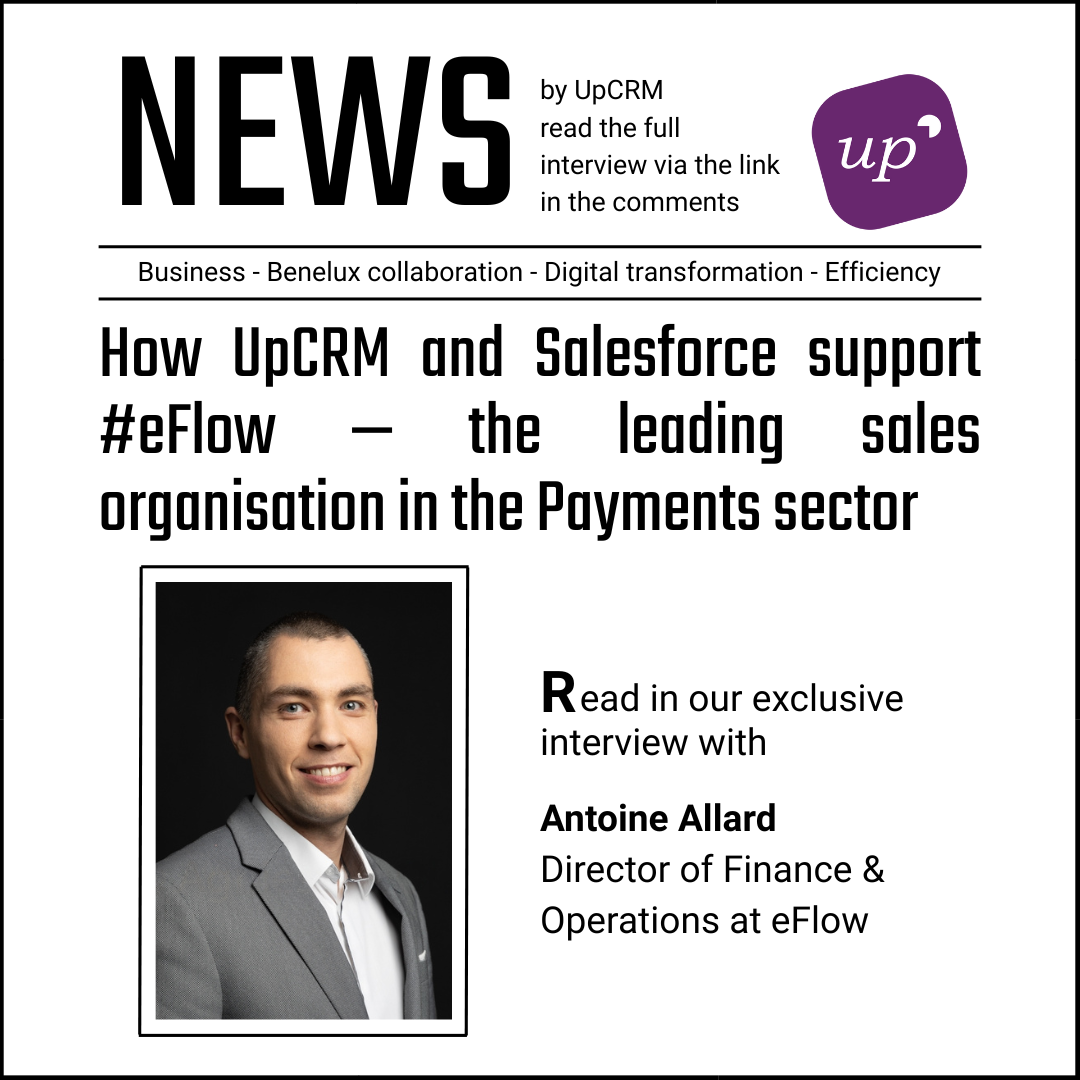 Clicks vs. Code: choosing the right tool in Salesforce
Clicks vs. Code: choosing the right tool in Salesforce
When it comes to building solutions in Salesforce, one of the most common decisions teams face is this:
Should we solve this with clicks or code?
With a powerful platform like Salesforce, you’re rarely short on options. You can use Flow for declarative automation, Apex for custom logic, or even integrate external tools for specialized functionality. But the challenge isn’t just about what’s possible — it’s about what’s sustainable, performant, and user-friendly.
In this article, we’ll explore how to make that choice wisely.
Start with simplicity: why Clicks (Flow) often win
Salesforce has invested heavily in its declarative toolset — and Flow is now the centerpiece of it. It’s not just a replacement for old-school Workflow Rules and Process Builder. Flow is a fully capable automation tool that handles record updates, screen interactions, email alerts, loops, decisions, and even invoking Apex.
Flow main advantages:
- You reduce development time and dependencies on developers
- Changes are easier to deploy and maintain
- You empower admins and product owners to iterate quickly
Use Flow when:
- The logic is linear or decision-based
- You need a UI experience (Screen Flow) for user input
- The data volume is manageable (under governor limits)
- You want to validate an MVP or prototype fast
Flow is perfect for handling things like auto-assigning records, onboarding sequences, displaying dynamic forms, or triggering alerts. The biggest benefit? It keeps your solution close to the platform’s native capabilities.
When you need more power: Apex is there to the rescue
Flow is impressive — but it’s not unlimited. There are moments when you hit its ceiling. That’s where Apex comes in.
Apex gives you full control of your logic. You can handle bulk operations, call external systems, manipulate complex data structures, and manage errors gracefully. It’s indispensable when performance, precision, and robustness are critical.
Use Apex when:
- Your logic involves recursion, multi-object relationships, or custom batching
- You need to make HTTP callouts to external services
- You need to handle thousands of records reliably
- Flow can’t give you the control you need over transactions or debugging
That said, Apex comes with responsibilities. It requires test coverage, version control, and proper deployment management. Unlike Flow, which can often be updated in production with minimal risk, Apex changes demand discipline and regression testing.
However, sometimes you need a third option!
While Salesforce is powerful, it’s not always the right place to perform every operation. There are times when it makes sense to push logic outside the platform using external tools or middleware (like MuleSoft, AWS Lambda, or Heroku microservices).
Use external tools when:
- You’re dealing with large-scale data processing (ETL)
- You want to decouple business logic from Salesforce (for reuse)
- You need real-time syncs with other platforms
- You’re constrained by Salesforce governor limits
These solutions give you power and flexibility — but they also add cost and architectural complexity. They require monitoring, security governance, and potentially more technical resources.
How to choose: a practical framework
When evaluating how to solve a problem in Salesforce, ask:
- Can this be done declaratively in Flow?
- If yes, start there. Build fast, test fast.
- Is Flow stretching too far or hitting limits?
- If so, switch to Apex.
- Is this logic better handled outside Salesforce entirely?
- Consider integrating with an external tool.
Here’s a simplified cheat sheet:

Clicks vs. Code is not a battle — it’s a balance
The smartest Salesforce orgs don’t choose between clicks or code — they use both strategically. They build flows to move fast, use Apex when they need control, and leverage integrations when Salesforce isn’t the best place to execute logic.
The goal is not to be purist — it’s to be pragmatic.
What matters most is maintainability. Who will manage this solution six months from now? Can your admin team iterate on it without calling a developer? Can your dev team test it without affecting production?
Choosing the right tool isn’t just a technical decision — it’s a design one. It’s about building solutions that perform well, evolve easily, and deliver value faster.
So next time you’re faced with a decision between clicks or code, don’t just ask what’s possible. Ask what’s sustainable. Your future team and your users will thank you!






